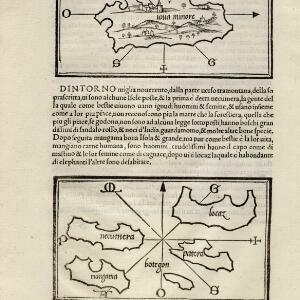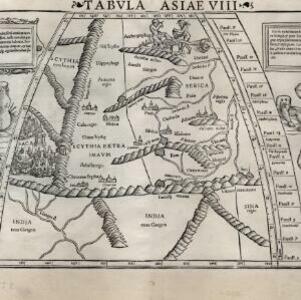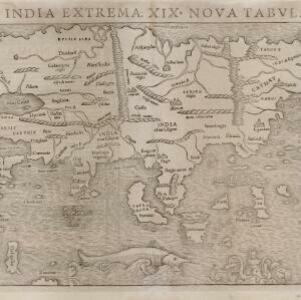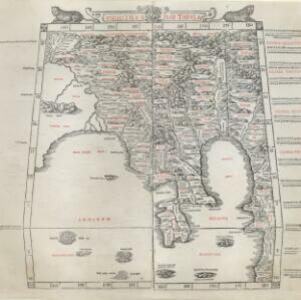
[Java Minor and map of Necumera, Locaz, Patera, Botegon, Mangama]
1547
Thailand, Indonesia
Taken from Benedetto Bordone's ‘Isolario [The Book of Islands]’, these pages contain two maps: one of Sumatra (‘Iaua Minore’), and one of a group of five unknown islands (Locaz is thought to possibly be Thailand).



















